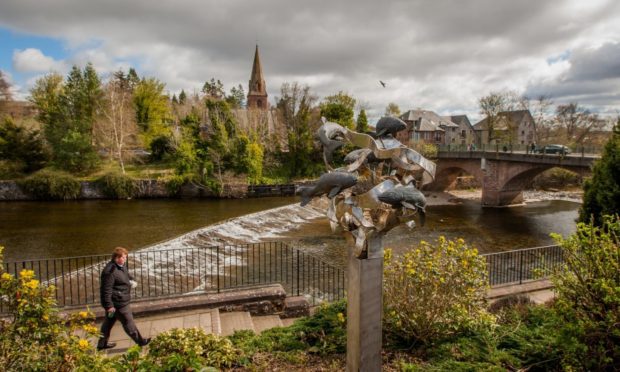Bosses at Cateran Ecomuseum in east Perthshire have announced plans to launch Scotland’s first Museum of Rapid Transition.
Thanks to a recent five figure funding injection from The Gannochy Trust, the museum have begun a new partnership with Alyth Development Trust.
Inspired by the natural and cultural heritage of the Ecomuseum, management designed a three-year programme aimed at helping communities and visitors take rapid climate action and shift to greener ways of living.
Bosses say that through showing how the story of the area’s past, they can help guide the story of our future.
Since the creation of the first phase and 2019 launch of the Ecomuseum, which spans miles of countryside around Blairgowrie, global heating and biodiversity loss have continued to escalate.
Given these crises, the Ecomuseum’s directors have agreed that their priority is to focus plans for their second phase on helping local communities and their visitors find ways to speed up their climate action and help restore biodiversity.
By teaming up with local communities and groups, the Ecomuseum team are now advancing with plans for a Museum of Rapid Transition.
Coinciding with Scotland’s hosting of the UN Climate Change Conference (COP26), the museum team will be concentrating on landscapes and staging a series of events and activities under the programme banner ‘From Deep Time to Our Time’.
Their work will include installing new written, visual and oral material and stories on the historic cultural, environmental and economic importance of woodlands and forests.
The team say this will be used to create new content for activities and events including one new temporary art installation which encourages involvement in landscape regeneration at all levels and new walking and cycling itineraries.
It is hoped this will grow the number of regenerative tourism experiences offered by the Cateran Ecomuseum and kickstart a campaign to position it as one of Scotland’s premier car-free holiday destinations.
Also in the plans is the first stage of a new paleo-ecological and geological study of the River Ericht, which will collect data from local archives and “citizen science” to create new learning and educational resources highlighting how human behaviours have degraded the river’s biodiversity and how its past history can be re-used to conserve, restore and manage it in the light of climate change.
The museum team are also planning to create “Micromastery” opportunities in heritage and indigenous skills that work with the land and its flora and fauna to help preserve its biodiversity.
Just before Christmas, the Ecomuseum received funding to help make it Scotland’s premier bikepacking destinations.
Co-ordinator Andrew Simms said: ““A few years ago I fantasised about a Museum of Rapid Transition and it is amazing to see one becoming reality in Scotland in the very year that the country hosts critical climate talks at COP26.
“Museums are physical manifestations of civilisations’ collective memories, inventories of the traces left in us by the past.”










